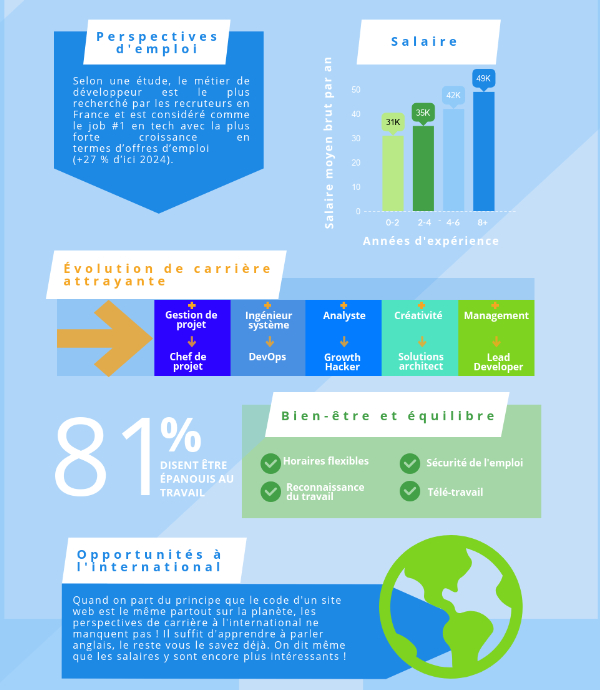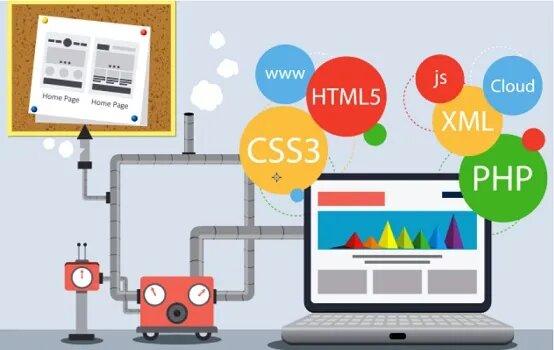Sommaire de la page
ToggleWeb and IT Trainer Consultant

I’m a Web and IT Training Consultant, Qualiopi bilingual English. With over 10 years’ experience, I have in-depth knowledge and expertise in web application and IT systems development. My technical skills include all aspects of web technologies such as HTML5, CSS3, JavaScript, PHP, WordPress, Joomla, Drupal and many more. I also specialize in training on software such as the Microsoft suite, Adobe, Google and Atlassian. As a Web and IT training consultant, I’m used to working with customers from all walks of life, from small businesses to large corporations. My goal is to provide the best possible solution for each client’s unique needs. I strive to stay at the cutting edge of technology by keeping abreast of the latest trends and developments in web and IT training.
My services include teaching best practices for various web technologies, teaching how to create effective websites and applications, developing customized solutions for clients, providing technical assistance and troubleshooting help, and helping manage client-server systems. I also offer consulting services such as analyzing current systems, drawing up project plans and making recommendations for future projects. I’m passionate about helping others learn and advance their technology and Internet skills. I look forward to working with you to improve your business processes and increase efficiency through the use of cutting-edge technologies. Together, we can create a customized solution that will help you achieve your goals.My Web and IT Trainer content
Web and computing in a nutshell
Web and IT training content
- Introducing the language, alerting the HTML main line, evolution,
- Introduce various working modes
- Entering and formatting characters and paragraphs, various graphic possibilities
- Adjusting and displaying the website in different browsers
- The impact of corporate strategy on design.
- Analyzed by site type and objectives.
- Strengths and weaknesses of the design environment (SWOT).
- Which positioning can meet your objectives?
- User behavior.
- Defining availability.
- Basic rules for website framing.
- Standards and constraints for web terminals.
- Design testing. Adapting design to mobile devices.
- Design impact on Flash, HTML5, Web 2.0…
Links between web design, strategy, and communication. Promoting a brand. Short and creative strategies. Graphic charter.
- Web design links, strategy, and communication.
- Promoting a brand.
- Short, creative strategies. Graphic design.
- Creating titles: the mind-mapping method.
- Content organization and editing.
- Managing collaborative content. Copyright.
- Search engine optimization.
Web 2.0 website design:
- Animation, Ergonomics…
- Contests, quizzes, blogs, coupons, forums, e-mails…
Legislation. Accessibility standards. W3C, WCAG, Braille Network…
HTML and CSS accessibility and development.




My Web and IT Trainer FAQ
There’s a lot to learn about computers and the Web. Fortunately, there are many resources available to help you get started. One way to learn about computers and the Web is to take a course. Many community colleges and universities offer courses in computer science and Web design. These courses can give you a good grounding in the following areas:
- Basic computer skills
- How to use the Internet
- Principles of web design
- Website creation
- Search engine optimization
Another way to learn about computers and the Web is to use online resources. There are many websites offering free tutorials on computers and the Web. These tutorials can teach you the basics of using different types of software, as well as more advanced concepts such as web design and search engine optimization.
On the other hand, using computer or web-based programs instead has certain disadvantages. of traditional classroom training. On the one hand, many employers don’t invest in employee training because they don’t see the need in today’s competitive job market. They may also be skeptical because they have seen disappointing results when trying previous forms of employee training in the past. Another disadvantage of computer or web-based programs is that they don’t always provide you with the support you’d get from a human instructor in real time if you need help or have questions while taking a course. This happens especially if you’re working on a self-paced online course where you have limited access to your instructor if you have questions or need help completing a task until the next scheduled class time. What’s more, many employers won’t even consider hiring someone who has no formal training or work experience unless they personally verify that all required steps have been taken during their course self-assessment period. Some people feel that computer or online programs are not as informative as traditional classroom courses, as they lack the interaction between teacher and student that occurs during face-to-face teaching. The information provided by these programs is not always as accurate, as human error too often occurs in face-to-face interactions between teacher and student. What’s more, there’s no way of verifying that the information provided by a teacher has been thoroughly researched and verified by other sources outside the program itself.The term “web” refers to the network of computers connected to the Internet. The term can also refer to the World Wide Web, a system of interconnected hypertext documents that can be accessed using a web browser. The term “computer science” refers to the study of information technology and its applications. It includes the study of algorithms, data structures and programming languages. Computer science is a vast field that can be divided into several subfields, such as artificial intelligence, software engineering and systems engineering.
The World Wide Web is a global information and communication platform. This means that anyone with a computer or mobile device can access it. Anyone with a computer can also create pages or websites for others to see. This makes the Web an excellent way of sharing information with others. It’s also a great way to keep abreast of news and events around the world. People use the Web to find out about sports results, school gossip and political news. It’s also ideal for learning about technology and computer tricks. Anyone with a mobile device, such as a smartphone or tablet, can also access the Web via applications such as Facebook and Twitter. Web services allow users to access the Web from anywhere. This means you can use a service like Google Maps to find directions to anywhere in the world. You can also use services such as Skype to talk to people all over the world using your cell phone. This makes it much easier for people with different schedules who need to connect with others online. It also allows people traveling outside their home country to always have access to the same things they use at home. Governments, businesses and other institutions use web services to share information quickly and easily.There are many programming languages that can be used to create a website. Among the most popular are HTML, CSS, JavaScript and PHP. If you’re just starting out, it’s a good idea to learn HTML and CSS. Once you’ve acquired a solid understanding of these two languages, you can start learning more advanced languages such as JavaScript and PHP.
HTML is easy to learn and adds a great skill to your CV. It’s a basic language you can use to create content for your website. Most people can already read and write in English, so HTML is easy to learn and apply in their daily lives. This makes it a very useful skill for career development and growing your reputation as a professional. Anyone can learn to program a website with HTML, so it’s a skill that’s accessible to everyone. Programming a website in a language like HTML gives you the opportunity to learn another language. Languages are like different dialects of the same language. For example, Spanish is one language, but it’s spoken in different ways around the world. Spanish speakers who speak the same language can still have different accents and understand each other, even if they speak the same language. Learning HTML is similar to learning to speak Spanish – it’s a way of learning web design and developing your own web presence. Learning HTML isn’t as time-consuming a process as people might think. In fact, most people learn it by doing while they work on their current job or assignment. Learning HTML is usually just an added responsibility that requires little extra time or effort on your part. This makes it a good choice for beginners looking to land their first web design job, or for professionals looking to add new skills to their portfolio or CV.There are many ways to find a job in the web and IT field. You can search for jobs online, in newspapers or at job fairs. You can also contact companies in the web and IT sector directly and find out about vacancies. Finally, you can use your network of contacts to find a job in the web and IT field.
One way to find a job in the web and IT field is to search for jobs on the Internet. This method is useful for people who want a specific job title or industry. Using this method, you can refine your search results using keywords such as “web developer”, “IT consultant” or “IT support specialist”. You can also use filters to further refine your results, such as location, salary or company size. This method works well for those who want a specific job, but is not always effective for finding general positions. For example, searching for “web developer” may only bring up jobs that are specifically looking for developers in your area, or those that require developers with specific skills or certifications. On the other hand, search terms such as “IT consultant” or “IT support specialist” will show you jobs that require these skills and may also have filters for location or pay range. This method is most effective when combined with other sources of information, such as networking events or word-of-mouth recommendations from former employees.